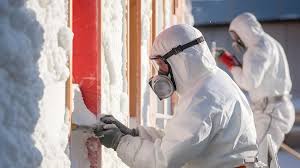Arrange an Asbestos Test to Check Building Safety

Building safety goes beyond structural soundness—it also involves identifying hidden hazards that could affect the health of occupants and workers. One such risk is asbestos, a once-popular construction material now known for its harmful health effects. If your property was built or renovated before 2000, there’s a chance asbestos may still be present. To ensure a safe environment, arranging an asbestos test is an essential step.
Why Asbestos Is a Safety Concern
Asbestos was commonly used in building materials because of its strength, fire resistance, and insulating properties. It can be found in roofing sheets, floor tiles, pipe insulation, cement boards, textured coatings, and more. While asbestos is not dangerous when left undisturbed and in good condition, it becomes a serious threat when damaged or disturbed during repairs, renovations, or demolition.
When asbestos fibers are released into the air and inhaled, they can cause severe respiratory diseases, including mesothelioma, asbestosis, and lung cancer. These conditions may take decades to develop but are often fatal. Therefore, identifying asbestos before any construction activity is vital for maintaining building safety.
What an Asbestos Test Involves
Arranging an asbestos test involves hiring a certified asbestos surveyor to assess your property. The surveyor inspects the building, looking for materials likely to contain asbestos. Small samples are collected carefully to avoid fiber release, then sealed and sent to a specialized laboratory for analysis.
The lab uses advanced techniques to detect asbestos fibers and determine the type and amount present. Once the analysis is complete, a detailed report is provided, outlining the locations, conditions, and types of asbestos-containing materials (ACMs) found, if any.
Who Should Arrange Testing
Any property owner, building manager, or contractor responsible for a structure built before 2000 should arrange asbestos testing before starting work that could disturb building materials. This includes:
- Homeowners planning renovations
- Landlords maintaining or upgrading rental properties
- Contractors preparing for construction or demolition
- Facility managers overseeing commercial or industrial sites
Testing is also recommended when damaged materials are discovered or during property transactions where asbestos could affect valuation or future development plans.
Benefits of Arranging an Asbestos Test
An asbestos test offers several clear benefits. First and foremost, it helps protect the health of anyone who enters or works in the building. It also supports legal compliance, as regulations in many regions require asbestos identification and management.
Additionally, knowing whether asbestos is present allows for better planning and budgeting. If removal or containment is necessary, it can be scheduled in advance, preventing costly delays. It also provides peace of mind for property owners and users, knowing the environment is safe and well managed.
Conclusion
Arranging an asbestos test is a responsible and necessary step for ensuring building safety. Whether you’re managing an older home, office, or industrial facility, testing can reveal hidden risks that are not visible to the eye. With accurate results and expert guidance, you can take appropriate actions to manage or remove asbestos and maintain a safe, compliant property. Don’t wait for a problem to arise—schedule an asbestos test and secure the safety of your building today.





